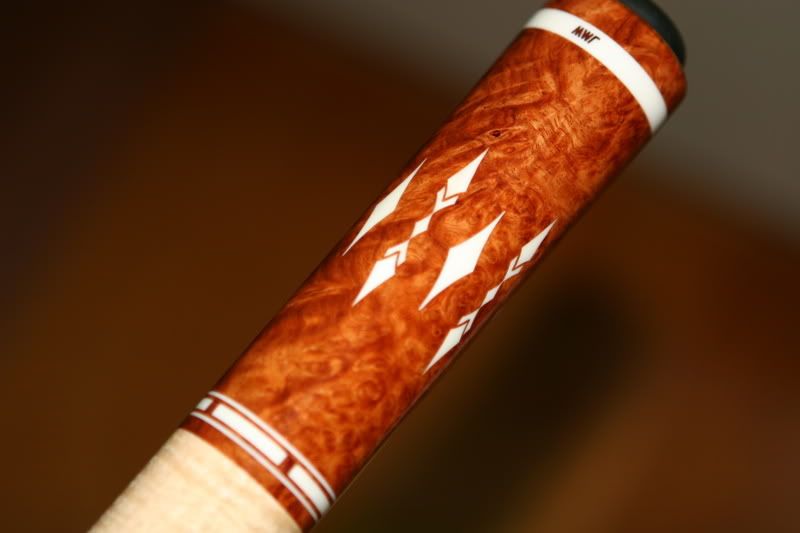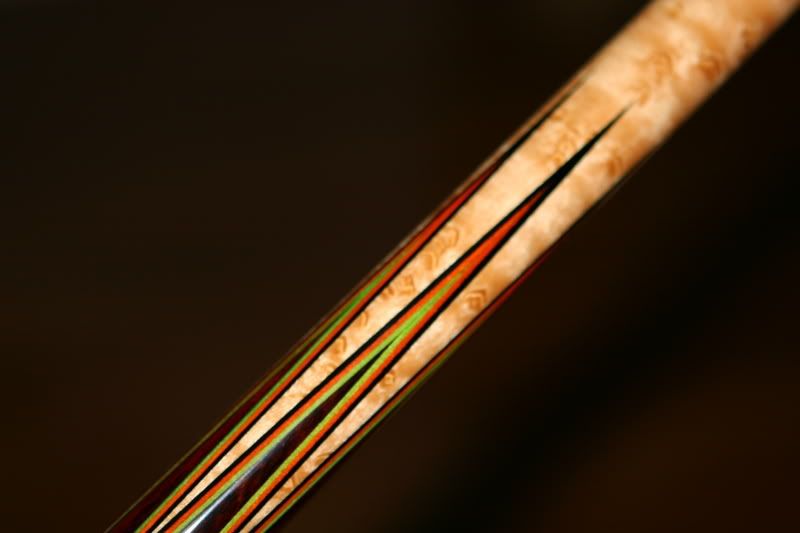You are using an out of date browser. It may not display this or other websites correctly.
You should upgrade or use an alternative browser.
You should upgrade or use an alternative browser.
great pics
- Thread starter kunin35
- Start date
Lighting is key
There are lots of good camera's on the market. The key to good pictures is in the lighting. I personally own a Nikon D50 DSLR and am very happy with this camera. Here are some examples from my camera.




There are lots of good camera's on the market. The key to good pictures is in the lighting. I personally own a Nikon D50 DSLR and am very happy with this camera. Here are some examples from my camera.




I use an Olympus SP-700 6.0 megapixel digital camera I bought from Costco which takes pretty nice pics, but as stated before lighting is key. I also have found you can soften the bright reflections by raising one end of the cue slightly so the light does not glare back at you.
John
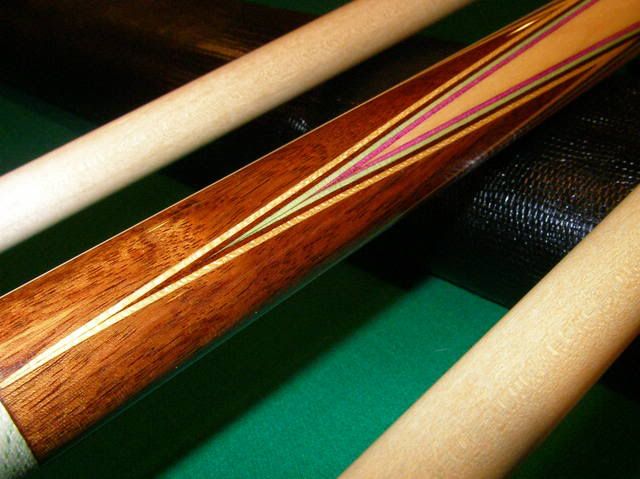

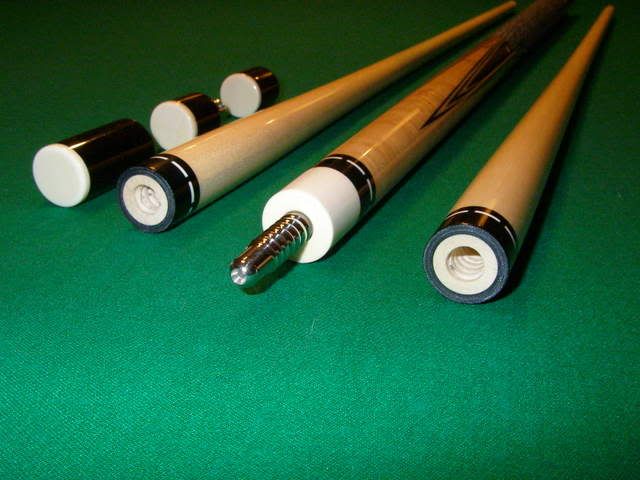

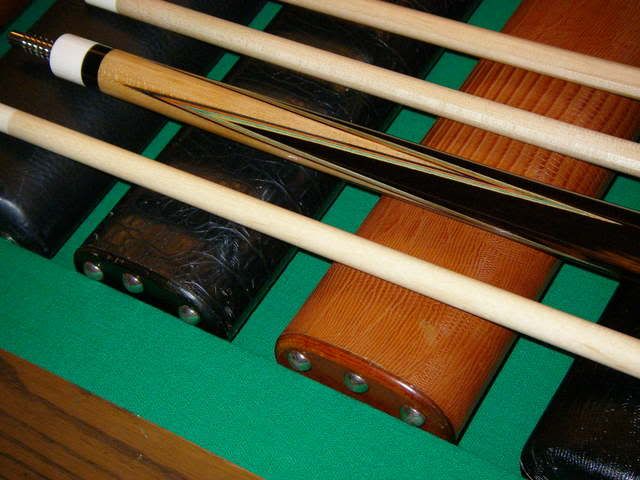
John





kunin35 said:i've noticed a lot of pics of great cues and was wanting to know what camera and lighting everyone prefers that's the most user friendly.
thanks
Hi Kunin,
if you don't want to spend much money on a camera, use daylight and invest the saved money into a piece of green poolcloth. Lay it on a table outside and position your cues on the cloth.
The table is not necessary, but makes the task easier ;-)
Most cameras give the best results with daylight. Flashlight is of the same colour and usually strong enough, but will often result in bright reflections.
Shooting indoors, use tungsten lamps and set the camera into the "lamp"-mode. You will usually get the best results with two lamps which you set at an angle. If the shadows are two strong, put the lamps further away, or let their light bounce from a white ceiling. The 500W-variety for garden or inhouse-work gives the best results, as the "lamp"-mode of most cameras is calibrated to this light-colour (3200K). Beware: 2x500W will result in a really warm environment, and resting the burning lamps on cloth or paper will result in burn marks or worse. Screw the lamps on a plank or to the wall.
Setting a point-and-shoot-camera to high sensitivities (ASA 200 or above) will result in bad picture quality - these cameras have small sensors which produce a lot of noise at high sensitivity.
With a DSLR like the Nikon D50, you can also achieve good results with a single flashlight - these cameras are able to calculate the required flashlight very accurately, they can even mix it with ambient or daylight, and it is also possible to set the flash at an angle to avoid reflections. However, a D50 costs a lot more than a simple camera and requires more knowledge of the photographic process.
Nothing very fancy, just the result of 10 minutes spare time:
One light from the left side, one light turned against the ceiling to soften the shadows.
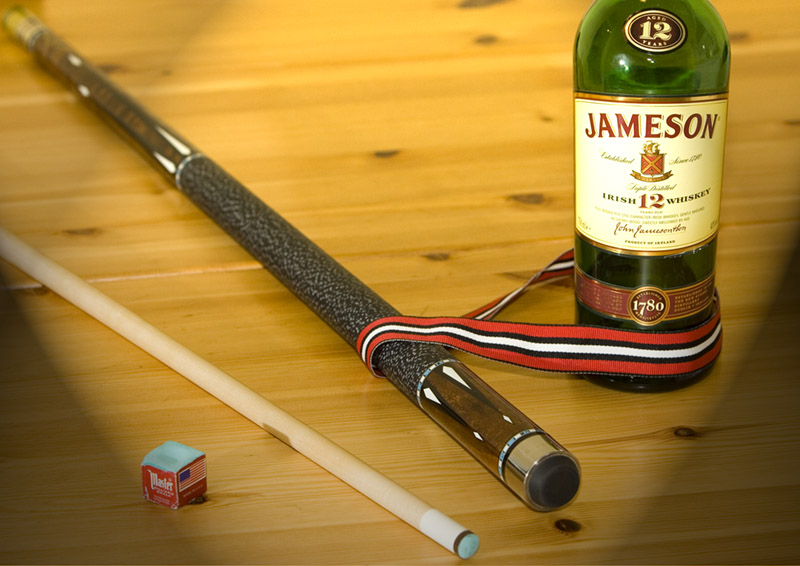
Regards,
Detlev
Last edited:
Detlev Rackow said:if you don't want to spend much money on a camera, use daylight
I find this to be very true .. I have a fancy camera and 500W light but just can't seem to get a good photo using the light.
When I do take the photo during day light, the photo seems to be much better.
camera
patrickcustomcues.com
I use a Olympus E510 check out my website to see some of the pictures.Vinman said:Try taking one outside on a clear day. Keep the sun behind you while holding the cue up to the sky. You'll capture some amazing detail! This was taken with an old 3.2 mp Canon.
patrickcustomcues.com
Taking pictures with daylight is the way to go for sure. I haven't tried that lamp-method but I hope that I'll be able to acquire the required lamps.
I am using a Kodak Z710 and it works pretty fine to me. I mostly shoot macro pictures - I have only a 5k2, I know it is not a big deal on this forum whereas amazing custom works are getting new home...
I love my cue's curly butt sleeve, I took a picture of it (along with a few hundred others ).
).
Here you go, please let me know what you think...
 By the way, this was taken at daylight too but a lamp was switched on at the forearm of the cue - while the sunshine came from the right.
By the way, this was taken at daylight too but a lamp was switched on at the forearm of the cue - while the sunshine came from the right.
I am using a Kodak Z710 and it works pretty fine to me. I mostly shoot macro pictures - I have only a 5k2, I know it is not a big deal on this forum whereas amazing custom works are getting new home...
I love my cue's curly butt sleeve, I took a picture of it (along with a few hundred others
Here you go, please let me know what you think...

Anyone else with 'great pics'? All these shots I saw in this thread were amazing... If you have such nice pics please post a few here! 
I was also wondering if there was a setting that was better to use for taking pictures.
Shane
Shane
DITTO... these pics are top notch, anyone else?poohkiller said:Anyone else with 'great pics'? All these shots I saw in this thread were amazing... If you have such nice pics please post a few here!
orangecrush said:I was also wondering if there was a setting that was better to use for taking pictures.
Shane
If you're taking a close-up shot of ring work, figured exotic woods, or other detail, make sure you use the macro mode of your camera. It allows the camera to focus properly on objects very close to the lense, usually 12" or less. As far as lighting goes, forget about using the overhead lighting from your pool table. Too many reflections.
Jimmyrayk said:I agree with several of the above posts. Outside lighting is the most important factor in taking great cue pictures. There are a ton of good cameras out there.
Here are a few of my better shots:
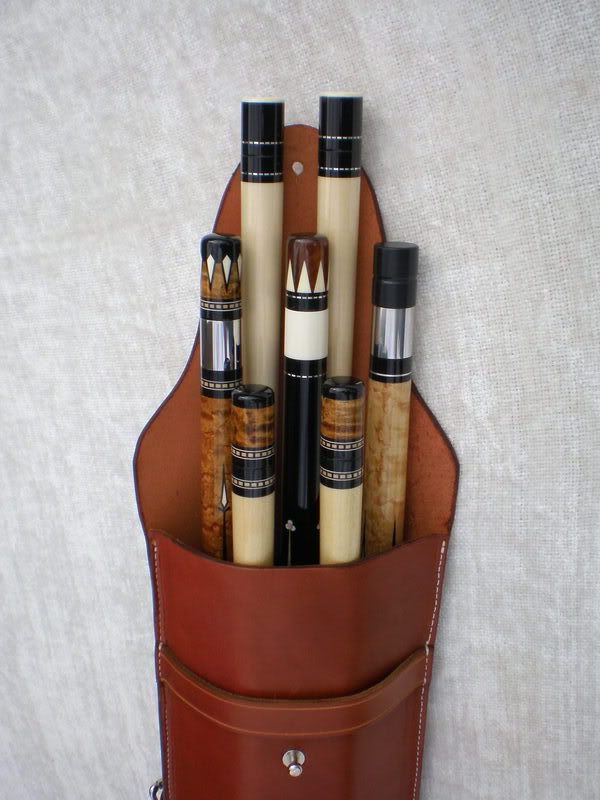
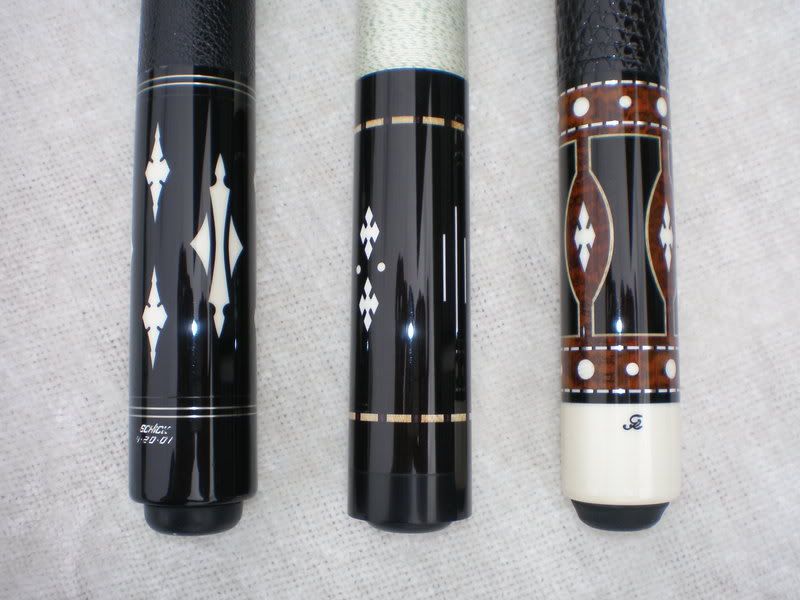

that's a very nice case you got there! oh, and course the cues are awesome...
That picture is so good that i'd never believe it was taken with a 3.2mp camera if you hadn't said so. You hit the nail on the head when you say how important the lighting is and sunlight is hard to beat on a clear day......Vinman said:Try taking one outside on a clear day. Keep the sun behind you while holding the cue up to the sky. You'll capture some amazing detail! This was taken with an old 3.2 mp Canon.
SCCues said:That picture is so good that i'd never believe it was taken with a 3.2mp camera if you hadn't said so. You hit the nail on the head when you say how important the lighting is and sunlight is hard to beat on a clear day......
Thanks! I recently upgraded to a Canon Rebel, but it is easier to use my old Canon Powershot for cue pics. The Rebel is just too big to hold steady in one hand while holding the cue with the other. When using the macro setting with good lighting, I find the Powershot has more than enough resolution. It's a great little camera!
Vinman said:Thanks! I recently upgraded to a Canon Rebel, but it is easier to use my old Canon Powershot for cue pics. The Rebel is just too big to hold steady in one hand while holding the cue with the other. When using the macro setting with good lighting, I find the Powershot has more than enough resolution. It's a great little camera!
Hi Vinman,
keep in mind that your pictures are downsized to appx. 0,5 MPixel anyway, so resolution doesn't matter that much. However, having good light will result in good sharpness when you don't shoot from a tripod. The best pictures will be possible by putting the cue on a stand and eventually even using the Rebel from a tripod. Stick with 200-400 ASA if possible, use a somewhat stopped down lens (the kit lens performs good when shooting with f/8 or above) and compare the quality. If you don't want to mess with photoshop, increase the sharpening in the camera and the contrast a little.
You've got a great camera which is able to outperform a Powershot, but it takes more thought to produce good pictures than with a point'n'shoot
Btw: The Rebel is not really "big". Those who are accustomed to a "1" will find it too small to get a firm grip
Regards,
Detlev
Last edited:

